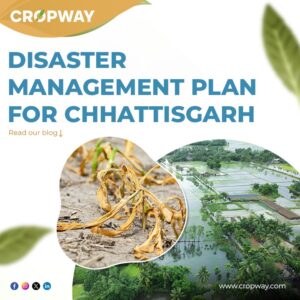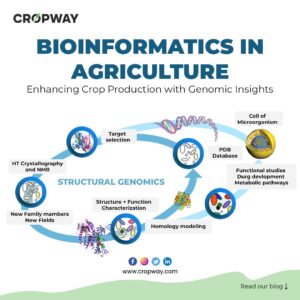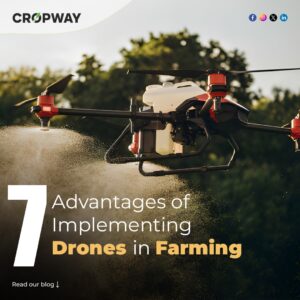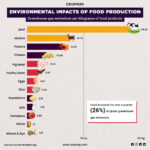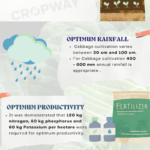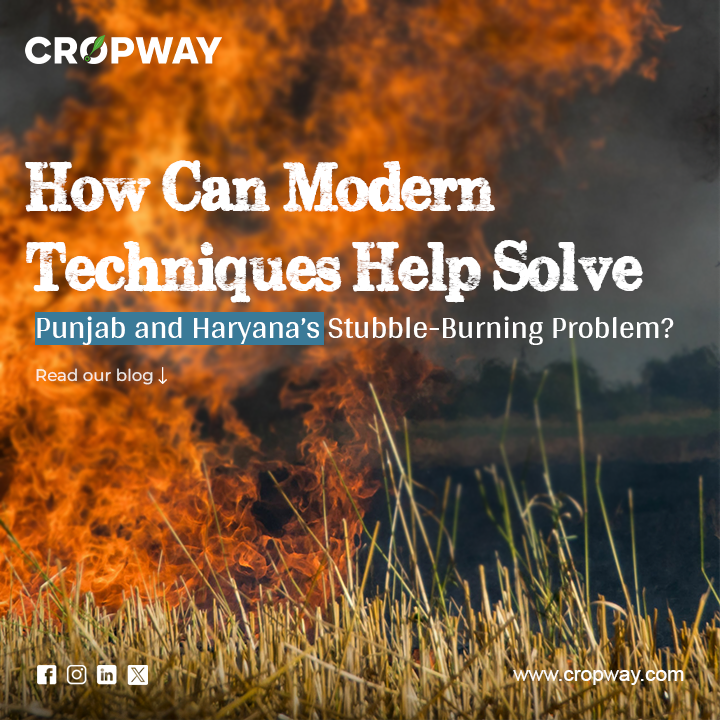
Understanding Stubble Burning
The late 60s and 70s Green Revolution in India aimed to boost food grain production, particularly in Punjab, Haryana, and Uttar Pradesh. While farm mechanization increased efficiency, it inadvertently led to stubble management challenges for farmers. Stubble burning emerged as an inexpensive and rapid solution to clear large volumes of paddy and wheat stubble left after mechanized harvesting.
The brief period between harvesting rice and sowing wheat leaves farmers in Punjab, Haryana, and Western UP with a pressing need for rapid field preparation. To meet this demand, many resort to the swift and efficient method of burning residue from rice harvests. However, this practice contributes to the haunting issue of stubble burning, casting a shadow over the picturesque landscapes.
It effectively eliminates pests, weeds (herbicide-resistant types), and crop diseases from the previous crop cycle. Crop residue burning, once confined to Punjab, Haryana, and western Uttar Pradesh, is now increasingly prevalent in other regions across the country, becoming a nationwide environmental concern. The urgent need for sustainable alternatives becomes evident in the face of this persistent environmental challenge.
Consequences of Stubble Burning:
Air pollution, health hazards, Soil infertility, climate impact—risks associated with stubble burning.
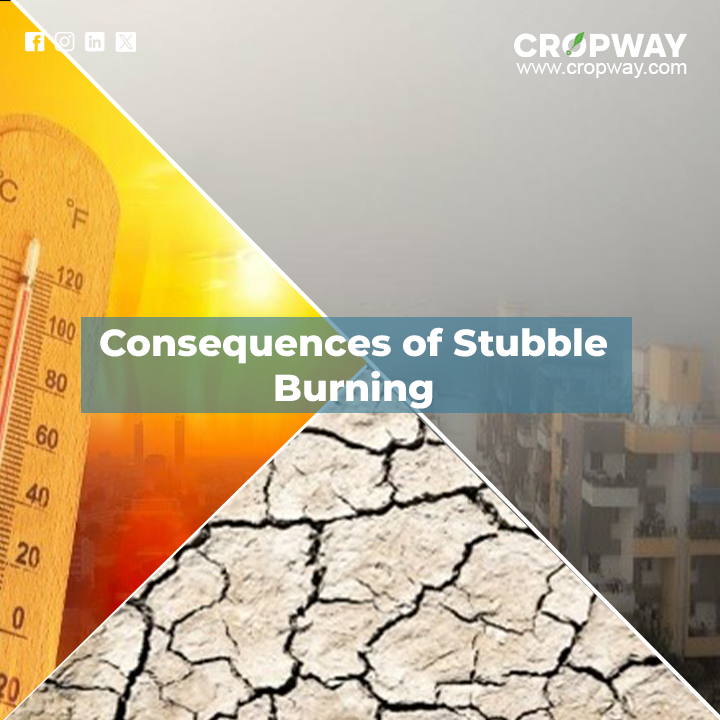
Pollution: Crop residue burning is a major contributor to air pollution. A study reveals that crop residue burning emitted 149.24 million tonnes of CO2, over 9 million tonnes of CO, 0.25 million tonnes of SOX, 1.28 million tonnes of particulate matter, and 0.07 million tonnes of black carbon.These emissions directly contributing to severe environmental pollution and air quality degradation.
Health hazards: A study disclosed that 84.5% of the population faced health issues due to elevated smog levels. The findings indicated 76.8% reported eye irritation, 44.8% experienced nasal irritation, and 45.5% reported throat irritation. Additionally, 41.6% reported increased coughing, and 18.0% reported wheezing. These health concerns underscore the detrimental impact of smog resulting from activities like stubble burning on the well-being of the population.
Increase Soil infertility: Stubble burning depletes vital Nitrogen, Phosphorus, and Potassium (NPK) nutrients, compromising soil organic quality and long-term productivity. It significantly diminishes the solubility capacity of the upper soil layers, and the resultant ashes not only deteriorate nutrient value but also contribute to soil dryness.
Climate impact: Massive stubble burning intensifies heat penetration, raising soil temperature to approximately 42 °C. This accelerates moisture loss, induces thermal instability, hindering subsequent crop growth. It also eradicates vital soil microorganisms at a depth of 2.5 cm, crucial for soil fertility.
Modern Techniques to Prevent Stubble Burning
The Union government released the National Policy for Management of Crop Residue in 2014. Since then, crop residue management has helped make the soil more fertile, thereby resulting in savings of Rs 2,000/hectare from the farmer’s manure cost.
In-situ treatment of stubble: In-situ crop residue management is a premier ecosystem conservation technique. It effectively removes crop residues while preserving soil nutrients, ensuring the sustainability of agricultural ecosystems and promoting soil health.
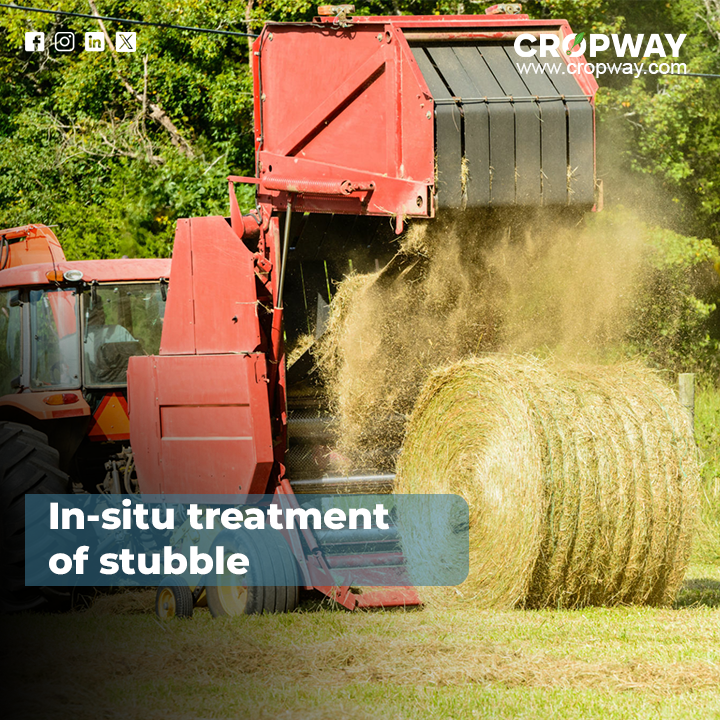
Several agricultural innovations offer sustainable alternatives to stubble burning. The Happy Seeder facilitates sowing in standing stubble, while the Rotavator aids land preparation and incorporates crop residues into the soil. The Zero Till Seed Drill enables direct seeding in the previous crop’s stubble, promoting minimal soil disturbance. The Baler collects straw and creates bales from paddy stubble, and the Paddy Straw Chopper facilitates easy incorporation into the soil. The Reaper Binder harvests and bundles paddy stubble. These technologies fostering efficient and eco-friendly agricultural practices.
Ex-situ management of crop residues: Ex-situ conservation involves off-site treatment of crop residue, removing leftover crops from their natural habitat. This eco-friendly method is a viable alternative to stubble burning, contributing to sustainable agricultural practices. There are a plethora of alternate solutions are readily available for adoption.
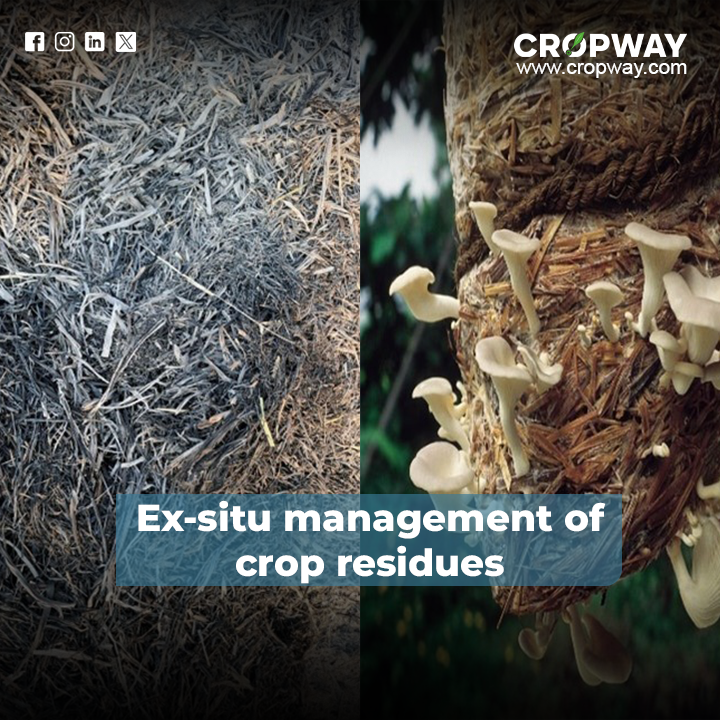
Composting: Composting involves decomposing rice straw to recover nutrients and organic components. This process can occur in open windows or in an enclosed controlled environment.
Mushroom Cultivation: Mushrooms possess the unique ability to decompose organic material that other microorganisms cannot. This not only facilitates mushroom cultivation but also provides farmers with income through mushroom production or selling rice straw.
Bio-Power: Paddy straw presents an energy source that can be efficiently harnessed in bio-power plants, an initiative pioneered by Punjab. The establishment of additional waste-to-power plants holds the potential to eliminate stubble burning, recycling straw for electricity generation. The by-products, notably ash, offer a sustainable resource for road construction.
The increasing demand for renewable fuels prompts the exploration of 2G Ethanol from agro-waste. With grain crops storing only half of harvestable energy, there is substantial potential to extract energy from crop residues.
Bio-enzyme PUSA: The Indian Agriculture Research Institute presents an innovative solution to stubble burning with the bio-enzyme PUSA. When applied, this enzyme decomposes stubble within 20-25 days, transforming it into nutrient-rich manure. This process enhances soil quality, increasing organic carbon and promoting soil health, ultimately resulting in a substantial reduction in fertilizer expenses for subsequent crop cycles.
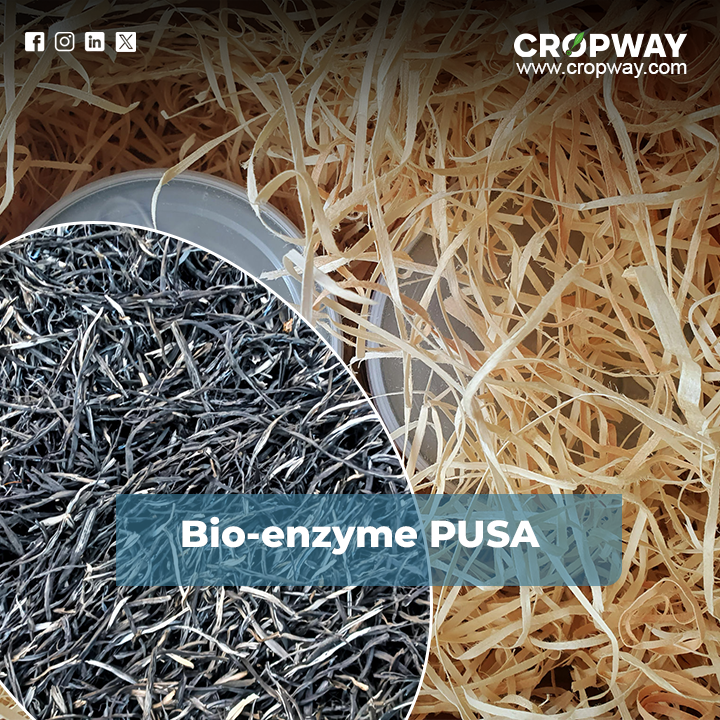
Briquetting: Transforming crop residue into regular-shaped briquettes offers ease of use, convenience in transport and storage. These briquettes have significant potential for co-firing in industrial boilers, providing an excellent substitute for furnace oil, coal, or direct wood, thus contributing to sustainable and eco-friendly energy solutions.
Biochar: Through pyrolysis in on-site brick kilns, paddy straw can be converted into Biochar, a kin to activated carbon. This Biochar finds versatile applications such as in the creation of renewable intense sticks, deodorizers, and garden fertilizers. Moreover, it enriches soil carbon content and serves for the bioremediation of degraded soils.
Packaging: Utilizing paddy straw for packaging not only addresses straw management but also reduces plastic usage. Employing chemical pulping technology enables the conversion of rice straw into paper and cardboard, providing an eco-friendly alternative for packaging materials.
Conclusion:
The stubble-burning crisis in Punjab and Haryana demands immediate and concerted efforts to embrace modern techniques that offer sustainable alternatives. For example, the integration of innovative seeder machines in agriculture offers a sustainable alternative to the traditional practice of burning rice straw. By seamlessly incorporating into the post-harvest process, these seeders not only eliminate the need for straw burning but also contribute to enhanced soil fertility, moisture retention, and weed control in wheat crops.
Despite the evident benefits, challenges persist in the widespread adoption of stubble management equipment. The Indian government’s capital subsidies aim to incentivize the purchase of such tools, yet farmers remain hesitant due to their seasonal nature and limited usage period. This reluctance, coupled with the prevalent use of conventional combines, a lack of market ties for non-basmati stubbles, and the slow uptake of expensive technologies, underscores the need for a swift and economically viable solution.
The government plays a pivotal role in fostering the widespread adoption of such innovative solutions, ensuring a technologically sound and environmentally friendly approach to crop residue management. By harnessing the power of modern techniques, Punjab and Haryana can turn the tide against stubble burning and pave the way for a more resilient and ecologically responsible agricultural sector.

